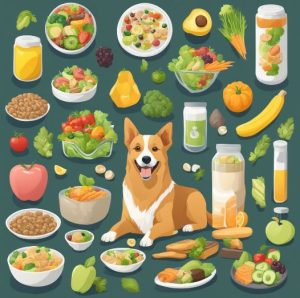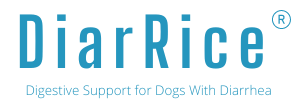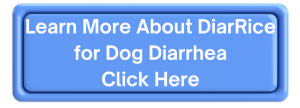Safe Dog Diet Changes: Best Practices for Ensuring Your Pet's Health
 Transitioning your dog to a new diet is an important step that can significantly impact their health and well-being. As a responsible dog owner, it's crucial to approach any dietary changes with care and knowledge. A safe switch to a new food should always be done gradually to avoid digestive upsets and allow your pet's system to adjust. Before embarking on a diet change, it's essential to understand your dog's nutritional needs, which can vary based on their age, size, and health status.
Transitioning your dog to a new diet is an important step that can significantly impact their health and well-being. As a responsible dog owner, it's crucial to approach any dietary changes with care and knowledge. A safe switch to a new food should always be done gradually to avoid digestive upsets and allow your pet's system to adjust. Before embarking on a diet change, it's essential to understand your dog's nutritional needs, which can vary based on their age, size, and health status.
It's advisable to consult with a veterinarian before making any significant changes to your dog's diet. They can provide guidance tailored to your dog's specific health needs and help you evaluate the quality of your pet's current food. Reading and understanding pet food labels can also be instrumental in choosing the right diet, ensuring it meets all the nutritional requirements of your furry friend.
Key Takeaways
- Changing your dog's diet should be done gradually to prevent digestive issues.
- Consult a veterinarian to tailor the diet to your dog's specific health needs.
- Understanding pet food labels is crucial to ensure your dog's nutritional requirements are met.
Understanding Canine Nutritional Needs
Your dog's health hinges on a complete and balanced diet tailored to their life stage. Accurately meeting their nutritional needs can help prevent illness and maintain overall vitality.
Importance of a Balanced Diet
Maintaining a balanced diet for your dog is crucial; it should consist of the right proportions of protein, fats, vitamins, and minerals. Protein is essential for muscle maintenance and growth, while fats provide energy and support cell function. Vitamins and minerals are vital for metabolic processes. A complete and balanced diet also includes adequate calories to meet energy requirements without leading to obesity and sufficient water for hydration.
- Protein: Essential amino acids for tissue repair and growth.
- Fats: Provides energy, absorbs vitamins, and maintains healthy skin.
- Vitamins: Crucial for immune function and preventing disease.
- Minerals: Important for bone health and hormone production.
- Calories: Should be tailored to the dog's activity level to prevent underweight or obesity issues.
- Water: Essential for all life processes; always provide clean, fresh water.
Nutritional Requirements Across Life Stages
The nutritional needs of dogs change as they age. Puppies require diets rich in protein and calories to support their rapid growth and development. In contrast, senior dogs may benefit from a diet lower in calories and fat to help prevent weight gain as their metabolism slows.
- Puppies: High protein and calorie content for growth, and DHA for brain development.
- Adults: Balanced nutrients for maintaining healthy weight and energy levels.
- Seniors: Adjusted calorie levels and easily digestible proteins for aging bodies.
Remember to adjust your dog's diet gradually to prevent digestive upset, and consult with your veterinarian for recommendations tailored to your dog's specific needs.
Evaluating Your Dog's Current Diet
Evaluating your dog's diet is paramount to ensure they receive the necessary nutrients for a healthy life. Your assessment should include scrutinizing pet food labels, consulting with veterinary nutritionists, and monitoring your dog for signs of nutritional deficiencies.
Reading and Understanding Food Labels
When reviewing dog food options, the pet food label is your first source of critical information. Important components to look for include:
- Guaranteed Analysis: This will inform you of the minimum percentages of protein and fat, and maximum percentages of fiber and moisture.
- Ingredient List: Ingredients are listed by descending weight. Look for a meat source as one of the first items, indicating higher protein content.
- Nutritional Adequacy Statement: This indicates whether the food is complete and balanced for a specific life stage according to AAFCO (Association of American Feed Control Officials) standards.
- Feeding Guidelines: These offer a recommended starting point for how much food to give your dog based on size and activity level. Adjustments may be necessary for individual needs.
Seeking Advice from Veterinary Nutritionists
A veterinary nutritionist is a specialist trained to formulate pet diets and manage nutritional health. Consult with one to:
- Gain professional insight on commercial dog food choices, particularly if you're considering specialty diets like grain-free or those with probiotics.
- Receive advice tailored to your dog's unique health needs, such as obesity management, food allergies, or other health problems.
Identifying Signs of Inadequate Diets
Be vigilant for signs that your dog's diet may be lacking. Common indicators include:
- Coat and Skin: A glossy coat and healthy skin are signs of good nutrition. Dullness or flakiness could suggest dietary deficiencies.
- Energy Levels: Lethargy or lack of interest in play can be related to improper nutrition.
- Digestive Health: Frequent upset stomachs or abnormal stools might indicate your dog isn't digesting their food well.
Regular evaluations of your dog's diet help assure their ongoing health and vitality. Monitor their condition and consult with professionals to optimize their nutrition as part of responsible dog ownership.
Introducing New Foods Safely
When you decide to introduce new food into your dog's diet, it is crucial to manage the transition period prudently, taking into account the possibility of digestive upset. Choosing between homemade and commercial dog food requires a clear understanding of each option's implications for your dog's nutritional needs.
The Transition Period
You should initiate a change in your dog's diet over a 7-day period, beginning with a mix of 25% new food and 75% old food on the first day. Gradually increase the proportion of new food every couple of days—50% new and 50% old on the third day, reaching 75% new and 25% old by the fifth day. By the seventh day, you can usually switch to 100% new food. During this transition period, keep an eye out for signs of a sensitive stomach, such as diarrhea, vomiting, or gas.
- Day 1: 25% new food | 75% old food
- Day 3: 50% new food | 50% old food
- Day 5: 75% new food | 25% old food
- Day 7: 100% new food
The transition period is a safety net to protect your dog's stomach, and gradual changes help prevent digestive upset.
Dealing with Digestive Upset
Despite your best efforts, digestive upset can happen. Symptoms like diarrhea, vomiting, or gas are signals that your dog's stomach may be having a hard time adjusting. When such symptoms arise, it's advisable to revert to the old diet and slow down the transition period. Providing a bland diet of boiled chicken and rice temporarily can help stabilize your dog's stomach. If symptoms persist, consult your veterinarian, as this could be indicative of a more sensitive stomach or other health issues.
Signs to watch for:
- Diarrhea
- Vomiting
- Gas
Homemade vs Commercial: Making the Right Choice
Choosing the right type of food for your dog—homemade, commercial, raw, freeze-dried, or dehydrated—depends on ensuring they receive a complete and balanced diet tailored to their specific needs. Homemade diets offer control over ingredients but require careful balancing to meet all nutritional requirements. Commercial dog foods are conveniently designed to be complete and balanced, taking the guesswork out of nutritional adequacy. If you opt for raw food diets, it's essential to be well-informed about safe handling and correct dietary balance. Always consult a professional before deciding, especially if your dog has health issues or a sensitive stomach.
Key distinctions:
- Homemade: Complete control but requires knowledge to balance.
- Commercial: Convenient, generally balanced.
- Raw/Freeze-dried/Dehydrated: Requires thorough research and often professional guidance.
Beyond Basic Nutrition
In ensuring the health and well-being of your dog, it's important to look beyond their basic dietary requirements. This section covers the integration of supplements and treats into their diet, the crucial role of hydration, and how feeding practices can affect dental health.
Incorporating Supplements and Treats
When you introduce supplements to your dog's diet, they should be selected based on specific nutritional needs and deficiencies. For instance, probiotic supplements can aid in maintaining healthy gut flora, potentially reducing incidents of diarrhea in dogs.
- Treats should not exceed 10% of your dog's total calorie intake to avoid obesity.
- Avoid giving bones that can splinter, posing a risk to your dog's teeth and digestive tract.
- Opt for dental chews which can promote hygiene by reducing plaque and tartar buildup.
Understanding the Role of Hydration
Water is as critical to your dog's diet as food. It's essential for nutrient absorption and digestion.
- Ensure your dog has access to clean water at all times to prevent dehydration.
- Hydration needs can increase with diet changes, especially if your dog eats dry food or is exposed to hot weather.
- Vegetables like cucumbers and watermelon can serve as hydrating treats, but beware of any that may cause pancreatitis or other issues.
Recognizing the Impact of Feeding Practices on Dental Health
Feeding practices can majorly influence your dog's dental health, which, in turn, can impact their overall health.
- A diet including crunchy kibble or specific dental snacks can help in removing plaque from your dog's teeth.
- Be selective with human foods; table scraps may lead to poor dental health and weight gain.
- Encourage the use of chew toys that can massage gums and keep teeth clean without adding extra calories.
Frequently Asked Questions
When changing your dog’s diet, it's crucial to ensure a smooth transition and maintain nutritional balance to keep your pet healthy.
What are the recommended steps to safely transition my dog to a new food?
To transition your dog to new food, start with a mix of 25% new food and 75% of the current food for a couple of days. Monitor your dog's reaction. If all goes well, gradually change the proportions to a 50/50 mix, then 75% new to 25% old, and finally, after 7-10 days, switch to 100% new food.
How can pumpkin be used effectively when changing a dog's diet?
Pureed pumpkin is high in fiber and can help regulate your dog's digestive system when introducing new food. Add a spoonful of pureed pumpkin to the mixed food during the transition period to help reduce the risk of diarrhea or constipation.
What frequency of diet alteration is considered healthy for dogs?
It is generally advised to only change your dog’s diet when necessary, such as when changing life stages, addressing health concerns, or due to a recall. Frequent, unneeded changes can cause digestive issues and stress for your dog.
How can owners facilitate a dog's weight loss in a safe and effective manner?
To support your dog's weight loss safely, reduce caloric intake gradually and increase exercise. Opt for a high-quality weight management diet, feed smaller portions, and consult your veterinarian to tailor an appropriate weight loss program.
What nutritional considerations are important when selecting a weight loss food for dogs?
For weight loss, select foods with high protein content to maintain muscle mass, low in calories, and rich in fiber to promote a feeling of fullness. Ensure they contain all essential nutrients and are formulated to meet your dog's specific needs.
What are the best practices for maintaining a healthy diet for a pet dog?
Maintain a balanced diet with appropriate proportions of protein, fats, and carbohydrates. Provide fresh water at all times. Stick to a feeding schedule, and avoid overfeeding. Regularly consult with your veterinarian to accommodate your dog’s changing nutritional needs.
Related Articles about Sudden Diet Changes in Dogs
Dog Diarrhea Diet Fix
Sudden Diet Changes Causes
Preventing Diet Changes
Dog Diarrhea Diet Signs
Managing Diet Changes
Consult Vet Diet Shifts
Balanced Diet For Dogs
Dog's Slow Diet Changes
Risks of Sudden Diet Changes
Jeffrey Kordell
Dr. Jeff Kordell, DVM is a practicing veterinarian in the northern suburbs of Chicago. He is a graduate of the University of Illinois Veterinary School. Dr. Kordell owns Animal Medical Center at Fort Sheridan and has had his own private practice for over 30 years. He is the co-founder of K&S Veterinary Labs LLC the maker of DiarRice.

